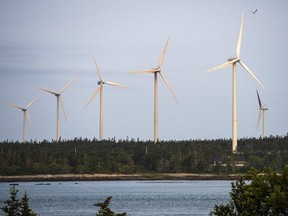
Article content
The Trudeau government’s pledge to achieve “net zero” greenhouse gas emissions in 2050 is impractical and unrealistic, and its 2030 target of cutting emissions up to 45% below 2005 levels could cause significant damage to the Canadian economy, according to a new study by the Fraser Institute.
Advertisement 2
Article content
“The plan to eliminate fossil fuels and achieve a net-zero economy faces formidable economic, political and practical challenges,” says Vaclav Smil, professor emeritus at the University of Manitoba and author of “Halfway Between Kyoto and 2050: Zero Carbon is a Highly Unlikely Outcome,” by the fiscally conservative think tank.
Article content
Other countries face similar challenges in reaching the United Nations’ target of net zero emissions by 2050, Smil writes, and “wishful thinking or claiming otherwise should not be used or defended by saying that doing so represents ‘aspirational’ goals.”
In reality, he says, the emission cuts called for by the UN by 2030 could only be achieved by “an unprecedented economic collapse … during the next seven years.”
Article content
Advertisement 3
Article content
“More and more people are recognizing these realities, and fewer are swayed by the incessant stream of miraculously downward-bending carbonization scenarios so dear to demand modellers.”
Smil notes that in the 26 years between 1997 — the year the UN’s Kyoto climate accord was adopted — and 2023, global fossil fuel consumption increased 55%.
Recommended video
By contrast, the share of fossil fuels used to power the world’s primary energy supply has decreased by only 4%, from 86% in 1997 to 82% in 2022, the last year for which data are available.
Citing data from the International Energy Association, Smil says “the best available summaries of global (carbon dioxide) emissions show that they increased 19-fold between 1900 and 2022, and that this steady rise was interrupted (for up to three years) fewer than 20 times across the 122-year span.”
Advertisement 4
Article content
Smil says promises of net zero emissions by 2050 — 26 years from now — are based on overly optimistic predictions of the time it will take for technological advancements to reduce emissions and the fact that even when peak emissions are finally achieved, the move away from fossil fuel energy will be slow and complex.
As one example, he notes that, “estimates provided by the International Energy Agency indicate that, compared to 2020, the widespread adoption of electric vehicles by 2040 will require over 40 times more lithium and up to 25 times more cobalt, nickel, and graphite, with more of these materials needed for new wind turbines, PV cells, transmission lines, and large storage batteries.
“Concerns arise due to the substantial time required to identify potential mining sites and develop the actual mines. The time required, assuming such scale is even possible, poses serious questions about the adequacies of potential mineral and metal production.”
Advertisement 5
Article content
Smil estimates the economic costs of achieving net zero emissions in high-income countries such as Canada would be at least 20% of GDP, “posing significant economic challenges.”
It would also require unprecedented international co-operation among global economic and geo-political competitors, including China, the world’s largest emitter which burns more than half of the world’s coal, the United States which is the world’s second-largest emitter, and Russia, the fourth-largest emitter, which depends on its fossil fuel exports for economic stability.
Smil says that as important as the goal of reducing emissions may be, in the best case scenario, it may be possible to reduce emissions by 60% to 65% by 2050 and, “responsible analyses must acknowledge existing energy, material, engineering, managerial, economic, and political realities.”
Article content



